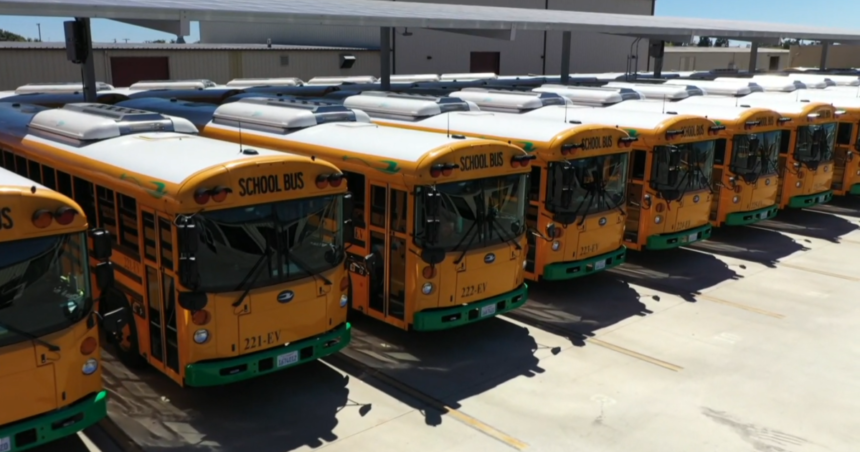This back-to-school season, the electronics list includes not only laptops and calculators but something bigger – the school bus. Nearly 200,000 of the more than 25 million students who ride buses in the U.S. will ride on electric batteries this year, according to the World Resources Institute.
An analysis of WRI data found that more than 800 school districts in the US have at least one electric bus on the road, and funding has been secured for more than 12,000 – about 2.5% of the nearly 500,000 school buses in the country. But at a cost of about $350,000 per bus, the district says it won’t be able to finance the new fleet, including buses and charging infrastructure, from its own budget.
The $5 billion cash infusion from the Environmental Protection Agency, passed as part of the bipartisan Infrastructure Investment and Jobs Act in the fall of 2021, is a boost to electrifying the fleet. Federal grants have funded more than two-thirds of the committed electric buses. Several states have helped fill additional gaps, including California and Massachusetts.
School buses are ideal for electrification, explains Leah Stokes, associate professor at the University of California, Santa Barbara. Buses “run the same route every day, and they can charge in the middle of the day,” Stokes said. “These are some of the easiest things to go electric. And that’s why it’s so important to go to electric school buses. It’s better for our health. It’s going to save the school district money, and it’s definitely better for our planet.”
The politics of electricity could reduce funding opportunities depending on who is in the White House next year, Stokes said. “If Trump is elected, the reality is that we will lose this funding,” he said. “(Trump) is not interested in electrifying our transportation system.”
Federal funding is key
In Modesto City Schools in California’s Central Valley, superintendent Sara Noguchi said the district initially planned a $12 million investment to electrify half of the fleet from diesel to electric.
The district, which buses about 5,200 students a day, is rolling out 30 electric buses during the 2023-24 school year. The district has reduced its out-of-pocket costs to $3 million from the original estimate, according to district officials.
Noguchi said the county wouldn’t have been able to make the investment if it weren’t for the federal funds, and acknowledged that the funding could be political.
“I hope that as a nation, we are committed to doing the work on sustainability that we know any political party should do,” Noguchi said.
The savings have already started in Modesto, where Noguchi said diesel costs have been reduced by 41%, or 47,000 gallons of fuel, reducing emissions in the school district.
“What does that equate to? More than a million pounds in two years of carbon that’s not being emitted into the Central Valley and into our air system,” Noguchi said. “Over time, and especially if we have all our buses and other districts have all the buses, that will be a big game changer.”
There are health upsides to reducing emissions, too. The Centers for Disease Control and Prevention reports that 4.3 million school-age children in the US have asthma, which the EPA says can be caused or worsened by exposure to diesel exhaust.
Until there are electric vehicle chargers available everywhere for students, including the high school where Modesto students are bused to sports and senior trip destinations like Disneyland, Noguchi will have to catch some diesel buses for long-distance trips.
“She came out with a smile”
For parents, change is welcome. Elvira Ceja has three children at the Modesto school, two of whom have respiratory problems and allergies, which she says are exacerbated by diesel fumes.
A year of riding the electric bus has reduced Ceja children’s reported headaches, prevented trips to the doctor’s office and improved their mood, he said. Little Maite can greet her brothers Aaron and Ariel at the bus stop without her mother worrying about the air quality.
“He used to get off the bus,” said the stay-at-home mom. “Now, he goes out with a smile and gets the ball and goes out and plays.”
Ceja believes that these new buses are worth the money. “We always want our children to be safe,” he said. “For the whole community, there’s less pollution in Modesto, which is great.”



